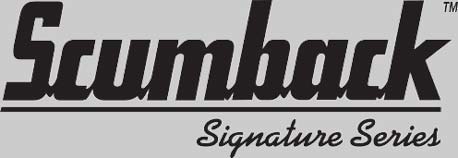
Vintage Guitar Builder's Profile text

Southbay Ampworks was founded in 2002 when Jim Seavall decided he just couldn't get into what he was hearing from mass-produced amps.
"I couldn't find the tone in anything smaller than a 50 or 100 watt amp" he said. "So I started looking to build the ultimate low power amp."
So Seavall did something to which most can relate - he got nostalgic, reverting to his teenage years and his very first guitar amp - a Gibson GA-8 Gibsonette. An electronics wiz, he beefed up its power supply, and made other improvements.
That singular piece of inspiration ultimately led to Seavall developing an entire line of amplifiers, with help along the way from other builders (Jim Foote & Billy Yates), plus a host of guitar playing friends, musicians and associates.
When you started building amps, you were occupied full time fixing digital video editing system for studios, producers and stars in Hollywood. When did you find time to build amps?
Well, it was very much a part time venture for the first two years, until 2004. Gradually, though, I spent more time, energy and money on amps, which necessitated a particular speaker design. So I became a Celestion collector; over five years I spent $40,000 buying about 300 old Celestions. I picked the best ones with help from great players like Kirk Fletcher and others, and found perfect "tone targets" for my speaker line, where I've tried, and succeeded in recreating the tones of Celestions from 1965 to 1979, with some new versions, hybrids and custom-made models. My speakers actually became so popular I've been concentrating on them for the last three years, in addition to RD on my amps.
When you launched Southbay, how many amp models were you building?
Initially, there were three designs. The first was the Scumbag conversion, which was basically a gutted and beefed-up Gibson GA-8 with custom transformers. These were made out of old GA-8 combo chassis and fitted with 12" pre-Rola Celestions on a new baffleboard. They had two 6V6's running in single-ended Class A, one Volume and one Tone control, and had two speaker output jacks with an impedance-selector switch. Then there was the dual-channel VVT, which had two Volume controls and one Tone. One channel was hotter than the other, and it was basically a beefed up GA-8 with a new circuit board and chassis. The VBMT was a single-channel version with three-band (bass/middle/treble) EQ.
How did you expand it from there?
I had been going along slowly but was making progress towards finalizing a line. At this point, my amp business was all word of mouth. Then, in mid '04 I met a guy online - an engineer in Houston who had heard some of the sound clips I'd posted - who wanted to be involved in my latest amp design. I named the amp after him - the Capt. Crunch model. It had two channels, with Volume and Tone on one, and Bass, Middle, Treble on the other, plus a built-in tone stack bypass I call the "Nuke" mode. It adds about a 25% gain and volume boost to the 3 band EQ channel via footswitch. There's a quad-6V6 model version called the Major Crunch.
In '04 I introduced my adjustable-back-panel line of extension cabs, which allow a player to tune their bass response. But my biggest selling product is the Scumback speaker line. I market 14 ceramic-magnet models in 10" and 12" sizes that replicate vintage pre-Rola speaker tones of stacks that were used back in the 60's. My Alnico-magnet model, the Scumnico, is available as a 10" and a12" with power handling from 15 to 100 watts.
What do you think sets your amps and speakers apart from the crowd?
Tone, build quality, and attention to detail. We've expanded the Scumbacks to include hybrid designs and high-power models that sound like the low-power originals. Beyond that, my amps are built to be played with minimal service while sounding huge and delivering the goods like an old stack. And owners can change their own tubes. My amps are single-ended Class A, so there's no cancellation of the even-order harmonics, unlike popular push/pull amp designs. This leads to a rounder, sweeter tone while still offering plenty of crunch and bite. And since my amps are cathode-biased, they don't require matched tubes, nor do you have to bias them. This means you can tube swap without using matched tubes, breaking out your multimeter, or taking the amp apart. It's my version of Amplifiers for Dummies!
What do you think is the missing in the field of amplifier construction today?
I would like to see more innovative and tonally superior products, and the industry as a whole strive to introduce fewer "me too" products and instead make better amps with more usable features and less hype - unless they live up to the hype, of course (laughs)!
What are some of your goals for Southbay and Scumback?
I'd like to open a Los Angeles showroom or demo area because I'd love to have more direct input from clients about what sort of products they really want. To that end, I've recently introduced models based on Marshall heads from the 60's, specifically the JTM 45 and the 50-watt Plexi models. I hope to continue to grow and enslave one guitar player at a time!
